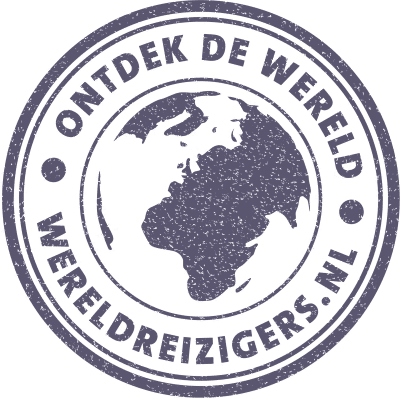The best way to see a country is by bike. And that also applies to The Netherlands† But because we don't cycle for the sake of cycling, but cycle to see something, I have collected a large number of special places in the Netherlands that we then visit by bicycle. This time we are in North Holland where we don't have to get bored. While we are cycling in the Netherlands near the village of Winkel, we come across a number of special buildings. Reason to take a look.
Cycling in the Netherlands: North Holland
Art garden Dutch Kremlin
When Ger Leegwater was divorced at the age of 40, he looked for what to do. He bought a piece of land near Winkel and started building with materials he found here and there. It became an obsession and now, 35 years later, there are a few special buildings in the polder and you imagine yourself in Russia.
It's Corona time so you couldn't make an appointment. When we get past it, the gate is open and I can't help but walk in. In the barn annex forge I find a man. Under the cobwebs, stains on his clothes and busy with some iron. It turns out to be Ger. After I make a contribution for the much-needed materials, we immediately receive an invitation to view the garden.
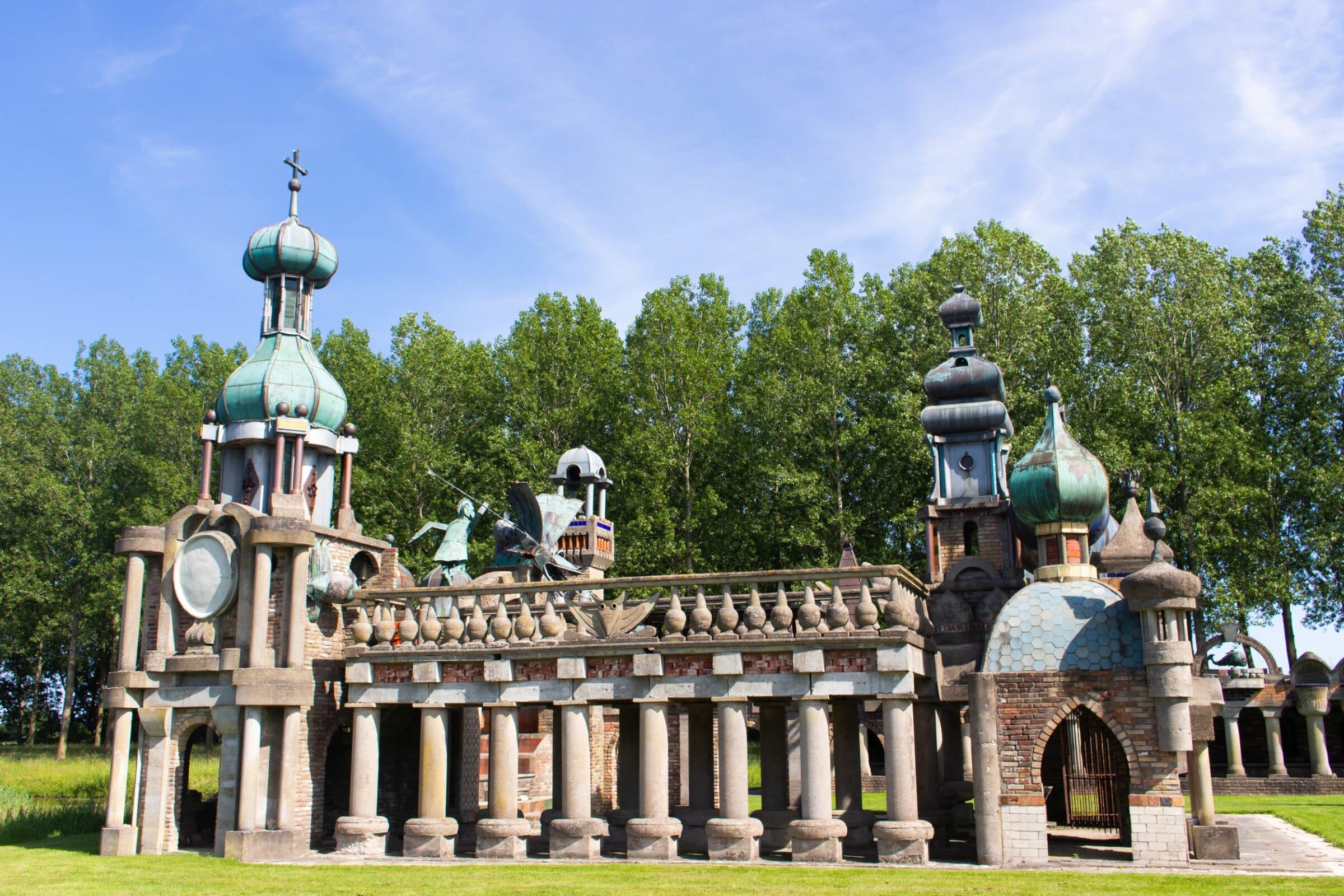
It's hard not to feel sympathy for Ger. A special man who has an opinion about everything (fat women, in-laws, Italian art, the Corona crisis and Greek mythology). His passion is building this kind follies† He stands up happy when he is allowed to work on a turret again. That he is a special man and enjoys life to the full is on his movies what he makes with his wife. And as he is in the movies, so is he in real life.
It helps that he used to be a blacksmith. He knows the materials and how to deform them. He works day-in, day-out on his creations. Often figures from (Greek) mythology. One of his most notable statements is; 'I don't have time to die at all, this has to be finished first.' He has an extensive site with information, photos, videos and interviews. You will find other information here† Just go once. And even if it's not open, there's plenty to see from the road around it.
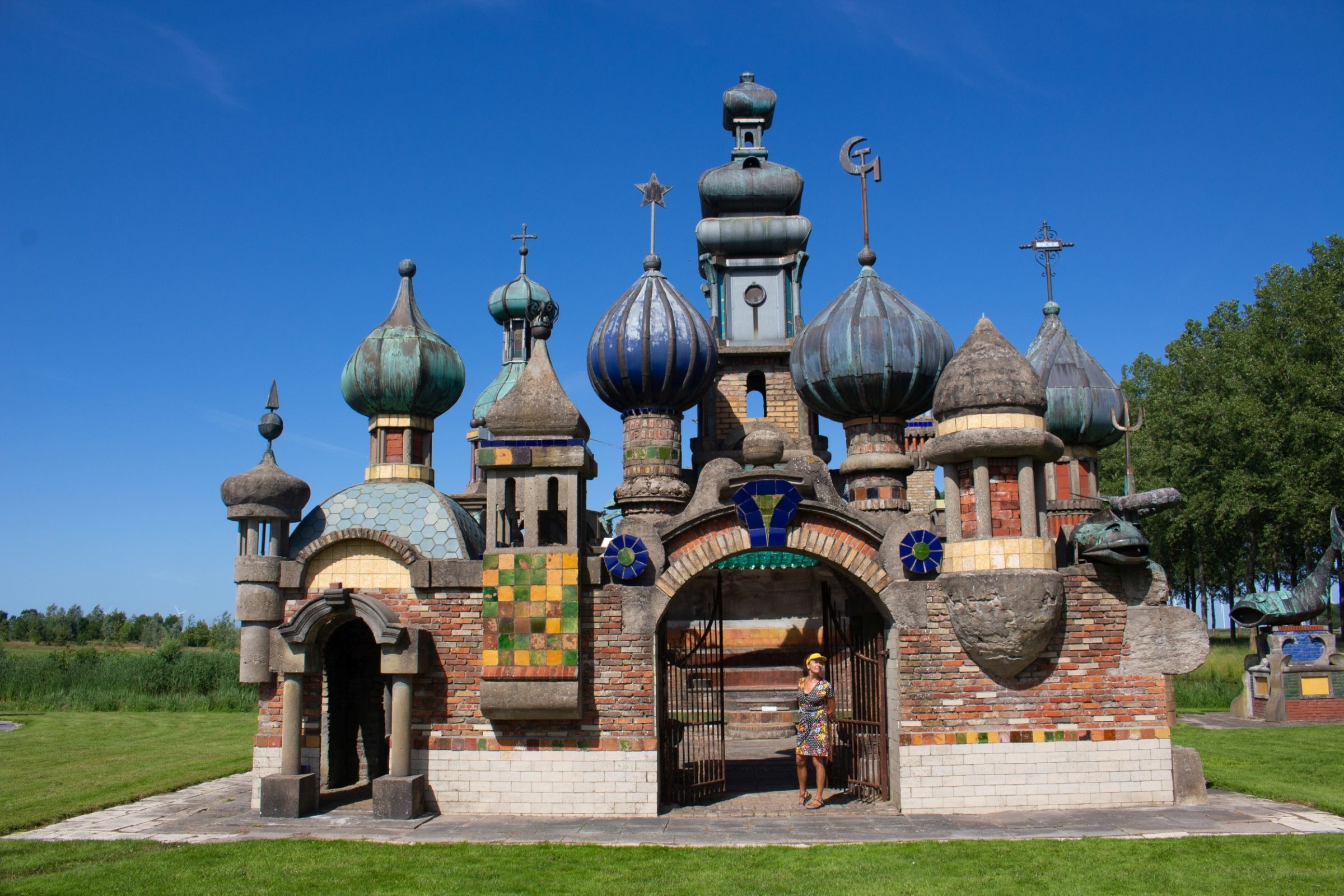
The protected village of Kolhorn
After this we cycle further through the Netherlands, towards Keins. Before we get there we pass Kolhorn. It is definitely worth getting off here and walking through the nationally protected village (cycling is not allowed here). What I find most special is that it was located on the Zuiderzee until 1844. Now it seems to be right in the middle of North Holland. The IJsselmeer is 15 kilometers away.
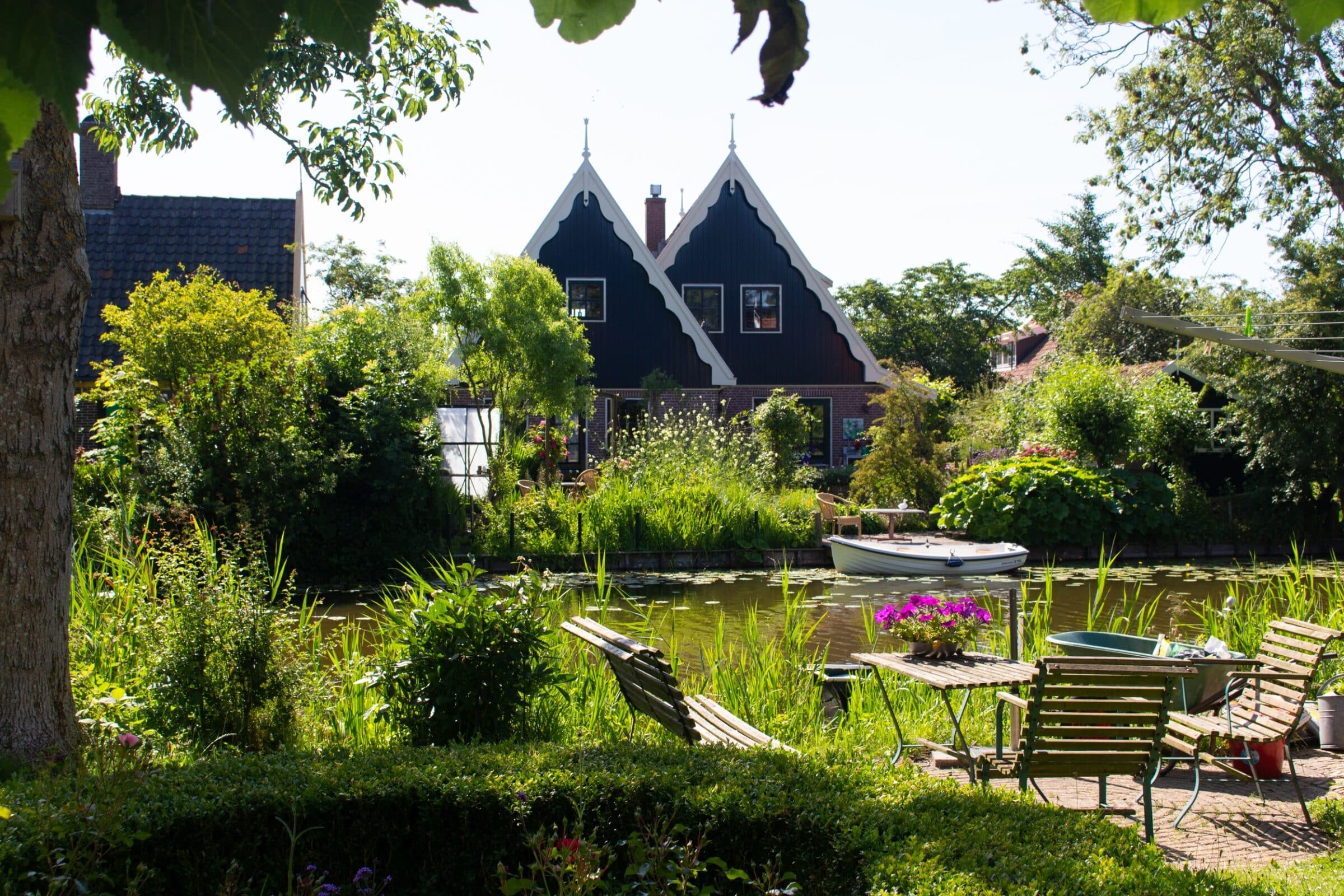
Overdose of ley lines at Keins
After that it is only a short bike ride to Keins, a hamlet just above Schagen. In the 15th century the waves washed against the dike here and one of the things it took with it was a statue of Mary. Where did that image come from? The exciting story is that it was cannonballed from a Portuguese ship. It is more likely that it was knocked off the Portuguese ship Ariadne when it crashed off the Vlie. They clean the statue in a well and from that time on miracles happen here with the water from the well. A chapel is being built for it and that attracts people:
"Wonderful favors were the reward of this devotion, and soon brought in whole multitudes of the faithful to manifest their necessities to the 'Comforter of the afflicted.'"
Our Lady in Keins
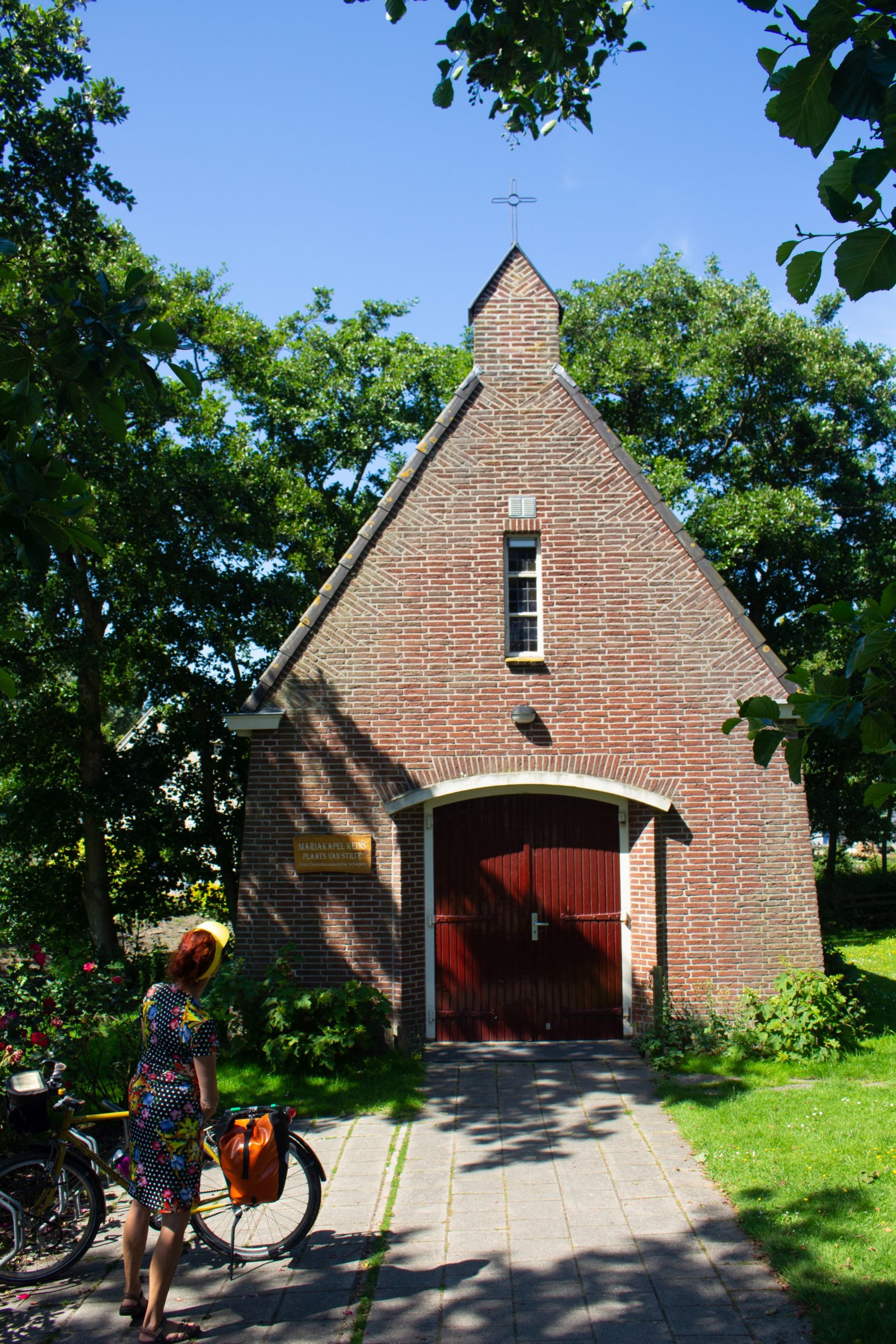
In the Reformation (1586) the chapel is destroyed by the savage Taet Gerritszen and the image disappears. Almost 350 years (1930) later, the same statue suddenly resurfaces (this time figuratively intended). It is found in a ditch in the Wieringermeer. A true mystery. What happened to the statue in the meantime? Disappeared temporarily in a black hole? You could write a book about it. A new chapel is being built with a replica of this statue. And that's what we're looking at right now. And the well is still there. Although closed, there is a bucket with miracle water in the church to rub on your ailments.
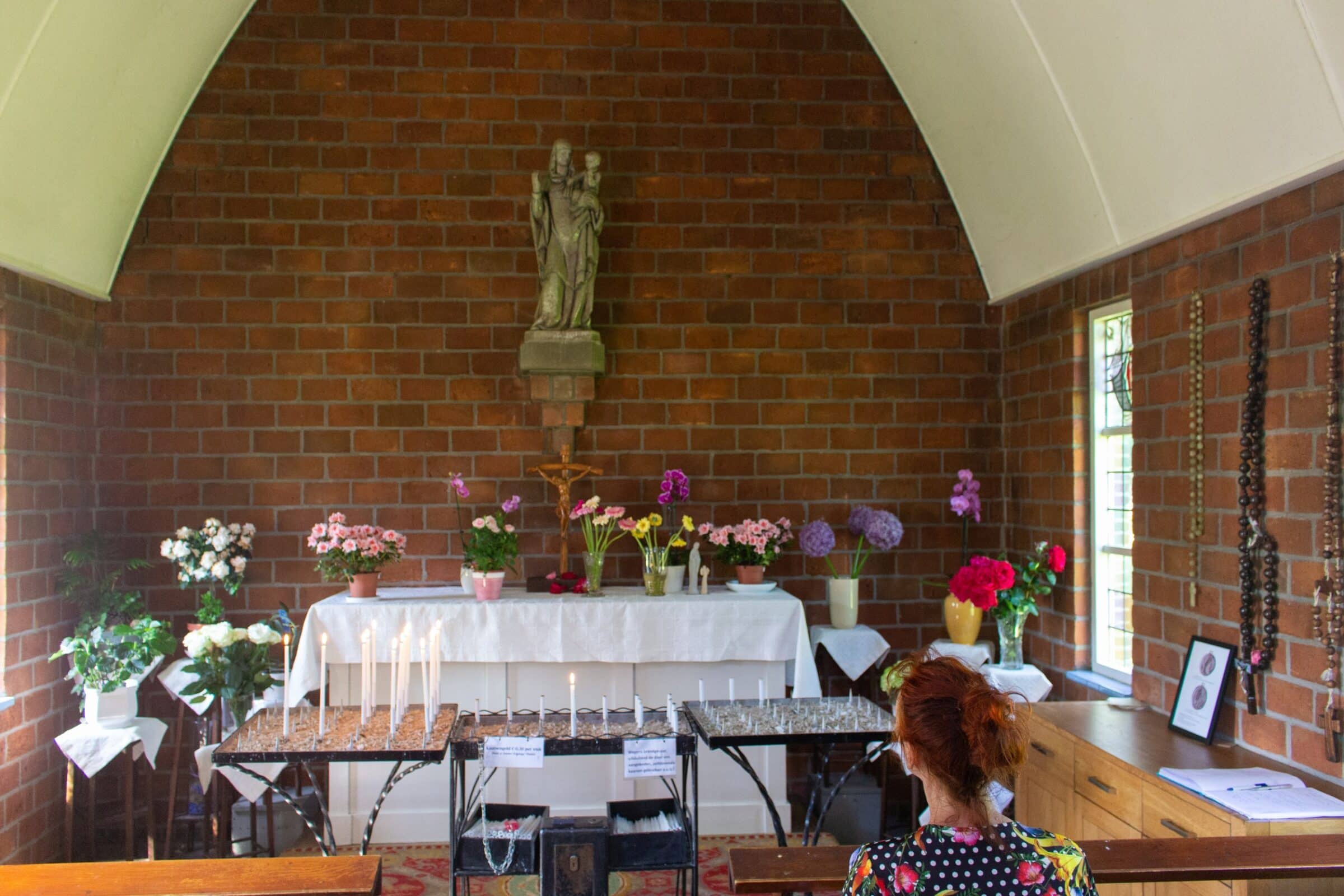
But the story isn't finished yet. In a vision, dowser Wigbolt Vleer sees that he must go to Keins. On the Afsluitdijk his dowsing rod starts to vibrate and at Keins the rod goes completely wild. It turns out that Keins is on the Michaels line. This so-called leyline runs from Santiago de Compostela, via Carnac and Le Mont Saint Michel, to Hargen en de Keins and on to Oosterland on Wieringen, Harlingen and Wijnaldum, Sylt and Stockholm before finishing 4000 km from its starting point in Arkhangelsk† On ley lines one experiences the positive power and calming effect of earth rays. That is why the spot near the well radiates a soothing tranquility. It is impossible because a total of 132 ley lines were found from the pit. This makes the water well on the Keins the strongest ley center in the Netherlands. My phone starts charging spontaneously.
Hindu temple in the Netherlands
We cycle further in the Netherlands, towards Den Helder. If you don't know, it's hard to find. And you don't pass by by chance. In a residential area, between schools and offices, there is a colorful building that turns out to be a Hindu temple.
Den Helder has always been a Hindu temple. It was not until 2013 that a colorful tower ('Raja Gopuram') was added. Fifteen Indian and eight Sri Lankan painters have been working on this for a while. The motives are to protect residents from harm. They have a nice one location for a party made of. The colors make me realize that we are really just a gray people.
“You can visit him most of the day (08:00–10:00, 11:30–13:30, 18:00–20:00) if you leave the spare ribs and burgers for a day and you go barefoot.”
Hans van der Veeke
Of course we know how to plan it again so that it is closed. Special to see something like this in the Netherlands. More information you can find it here.
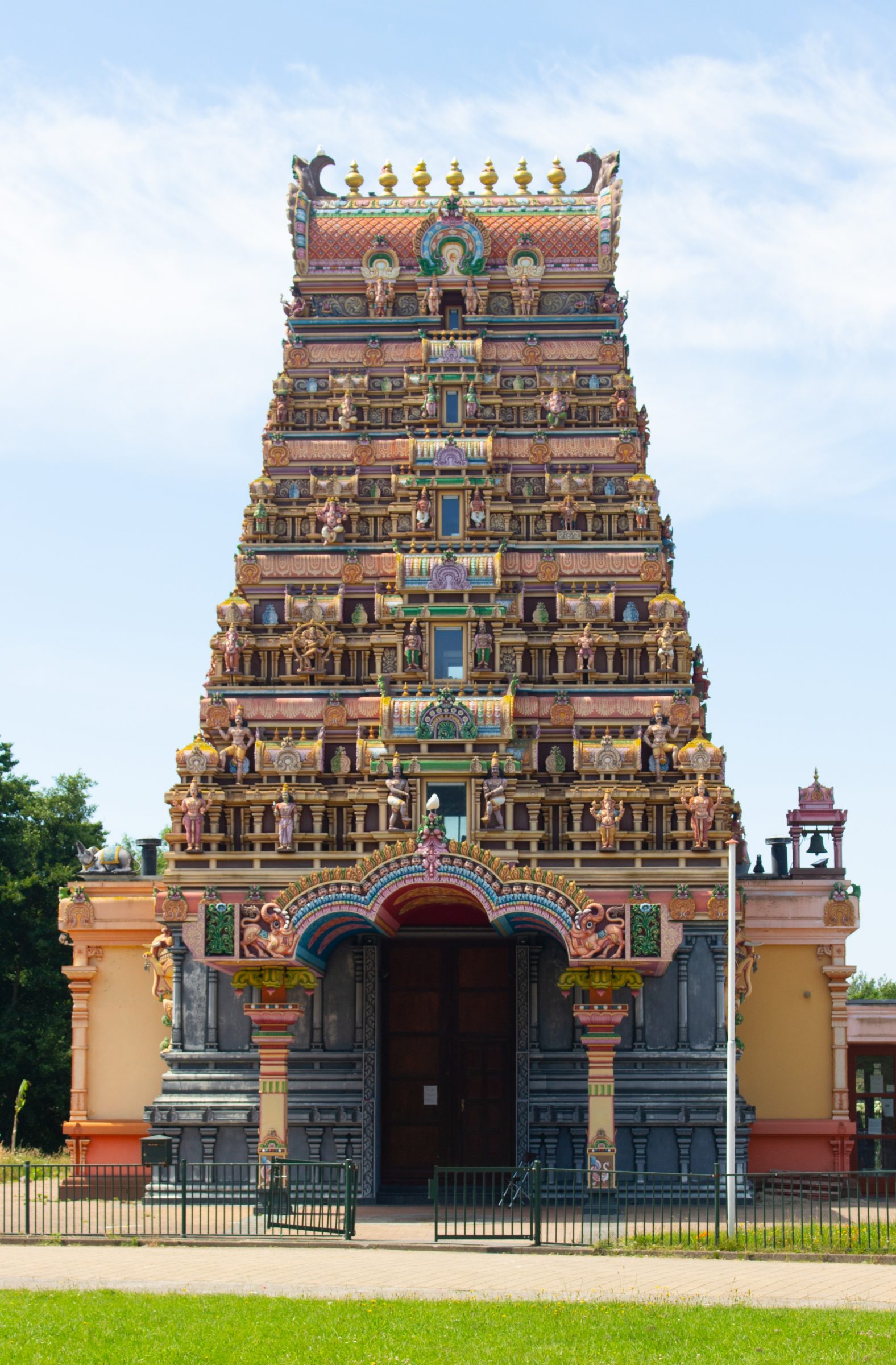
Cycling in the Netherlands: Round Texel
The next day we pack early and make sure we have the 5:XNUMX am boat. In this season the boat goes once an hour. On the half hour from Den Helder and on the hour from Texel. The Soepboermafia has no influence on the prices here. We can cross the road for the ridiculously low amount of €XNUMX, including the bike. We do have to wear a mouth cap.
There is a lot to see on Texel and for this we cycle around the entire island. With just under 60 kilometers, this can easily be done in one day. After arriving on Texel it is easiest to take the Wadden side (so counterclockwise).
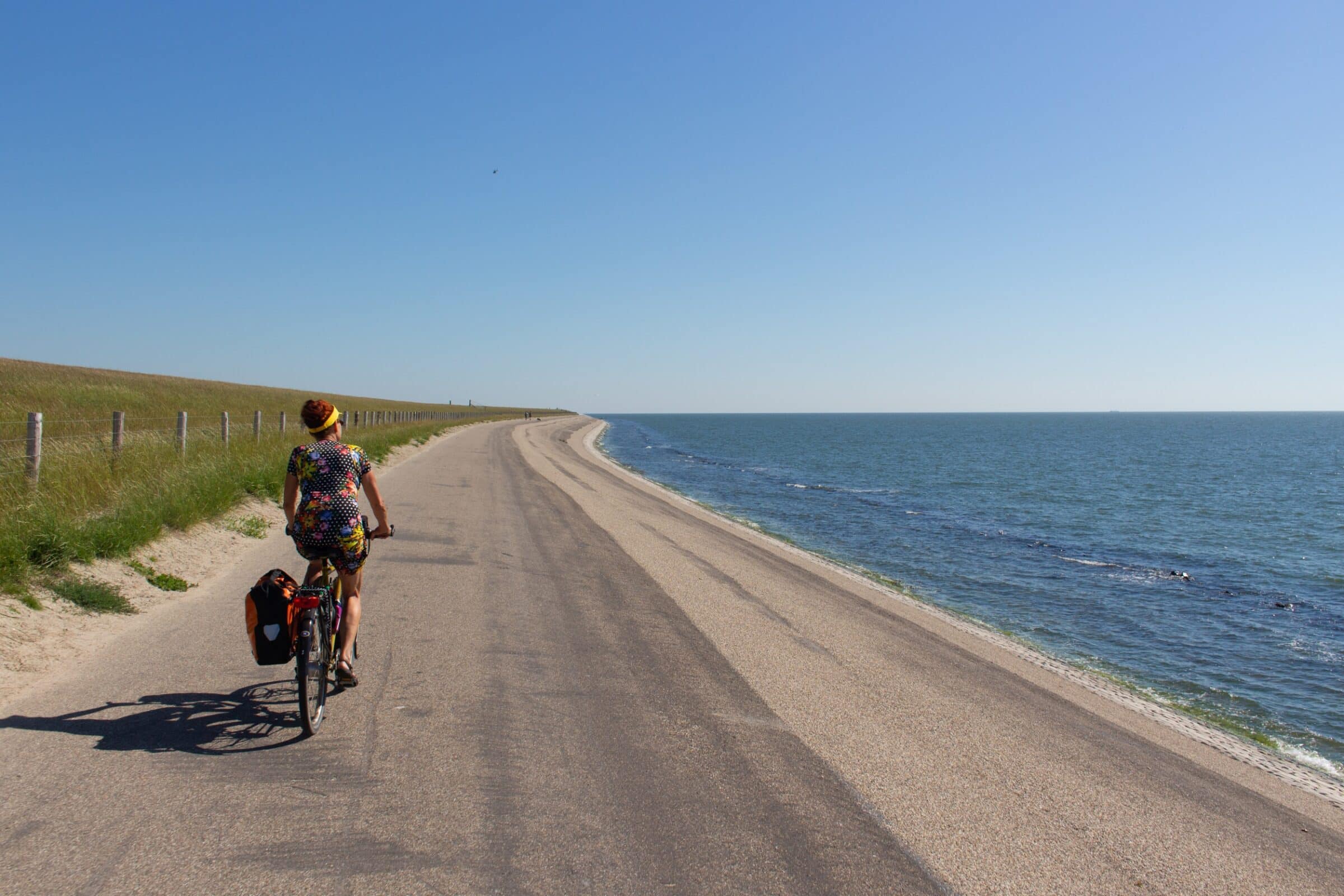
Fort the redoubt
Soon we see some strange hills along the bike path. It turns out to be the former Fort de Schans. This fortress was built in 1574. At that time, this was still the offshore anchorage of the Rede van Texel, which he had to protect. Later the fortress grew into a true fortress that even Napoleon paid attention to. In fact, he was there in person in 1811 and had two support forts built. After the French period, the decline started and in 1930 a section was excavated for dyke reinforcements. At the end of the nineties, nature monuments took over the remnants and this is what is left of it now. Some overgrown hills and a cannon.
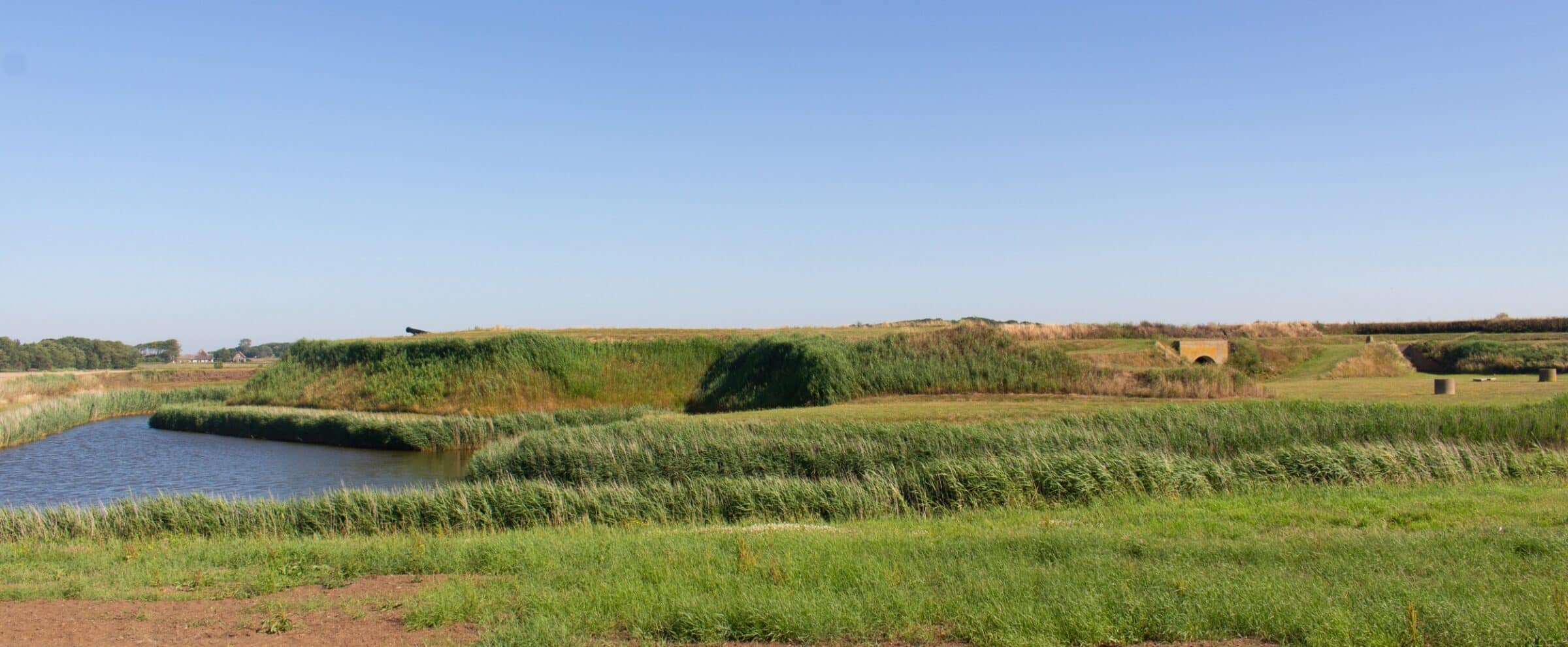
Texel lighthouse in sight
We continue to follow the dike and cycle to the north side of the island. Sometimes with a view to the Wadden Sea and sometimes to the interior. Of all the Wadden Islands, Texel gives me the least feeling of being on an island because it is so big.
At the Schicht we pause for a moment. This is the monument to the fortified seawalls. If you look closely, you can see their contours in the monument. Cocksdorp is located at the top of Texel. We only see it from afar because we want to go through the lighthouse. I always like lighthouses and that's why we stop at this one in the Eijerland dunes. It's busy here. Many cyclists, but also many cars. It seems that everyone here wants to go to the beach.
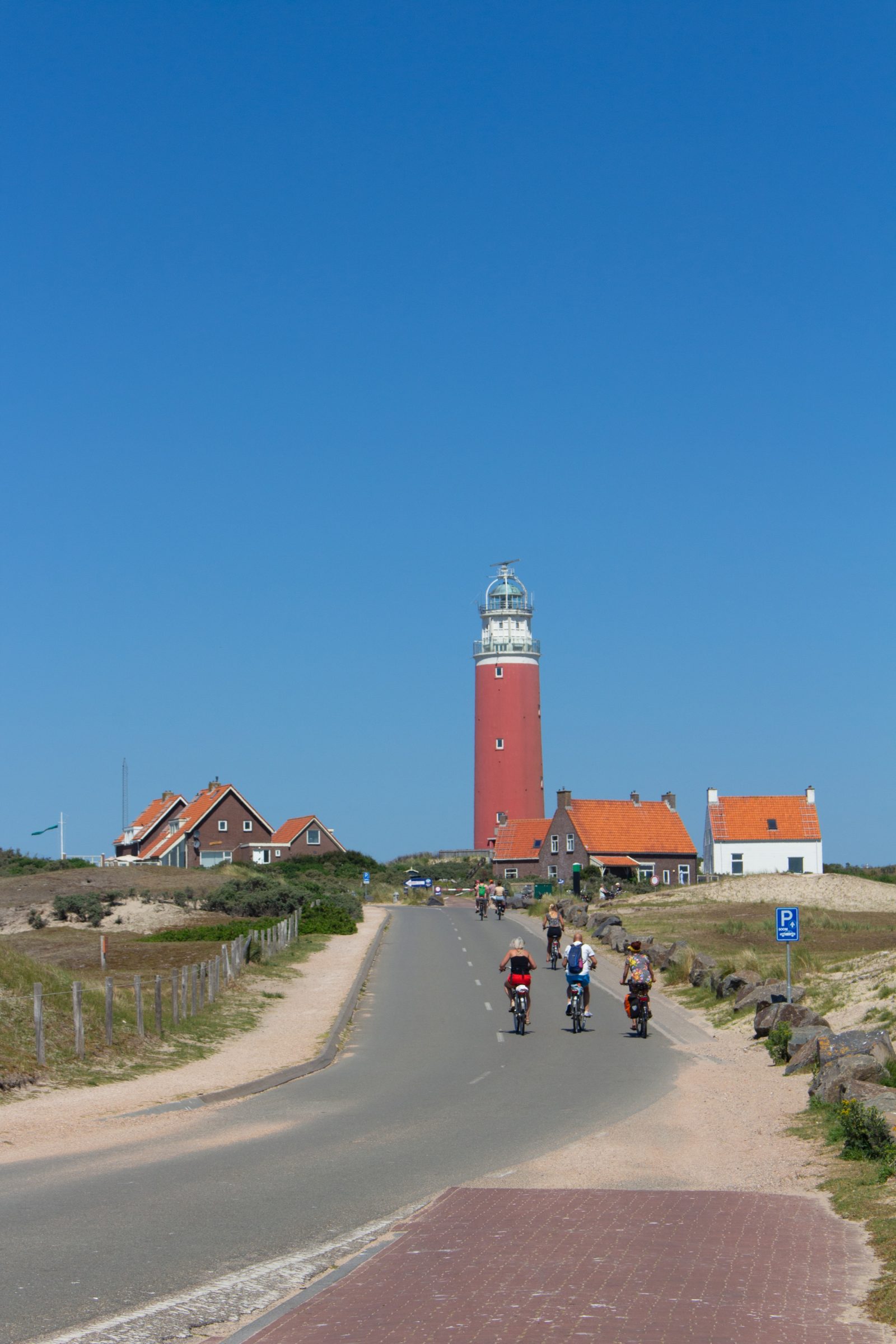
Walking in the Slufter
Also the nature reserve of the Slufter is worth it. It is a beach plain enclosed by dunes that is connected to the sea, so that the influence of ebb and flow is present. This creates a salt marsh landscape. The slufter is actually the name of the creek(s) that flow through the area. Nowadays, slufters and slufter formation are also spoken in other places to indicate beach plains constricted by the dunes, where the influence of ebb and flow is present. They are toponyms; they are derived from De Slufter on Texel. You can't cycle through it, but you can walk through it.
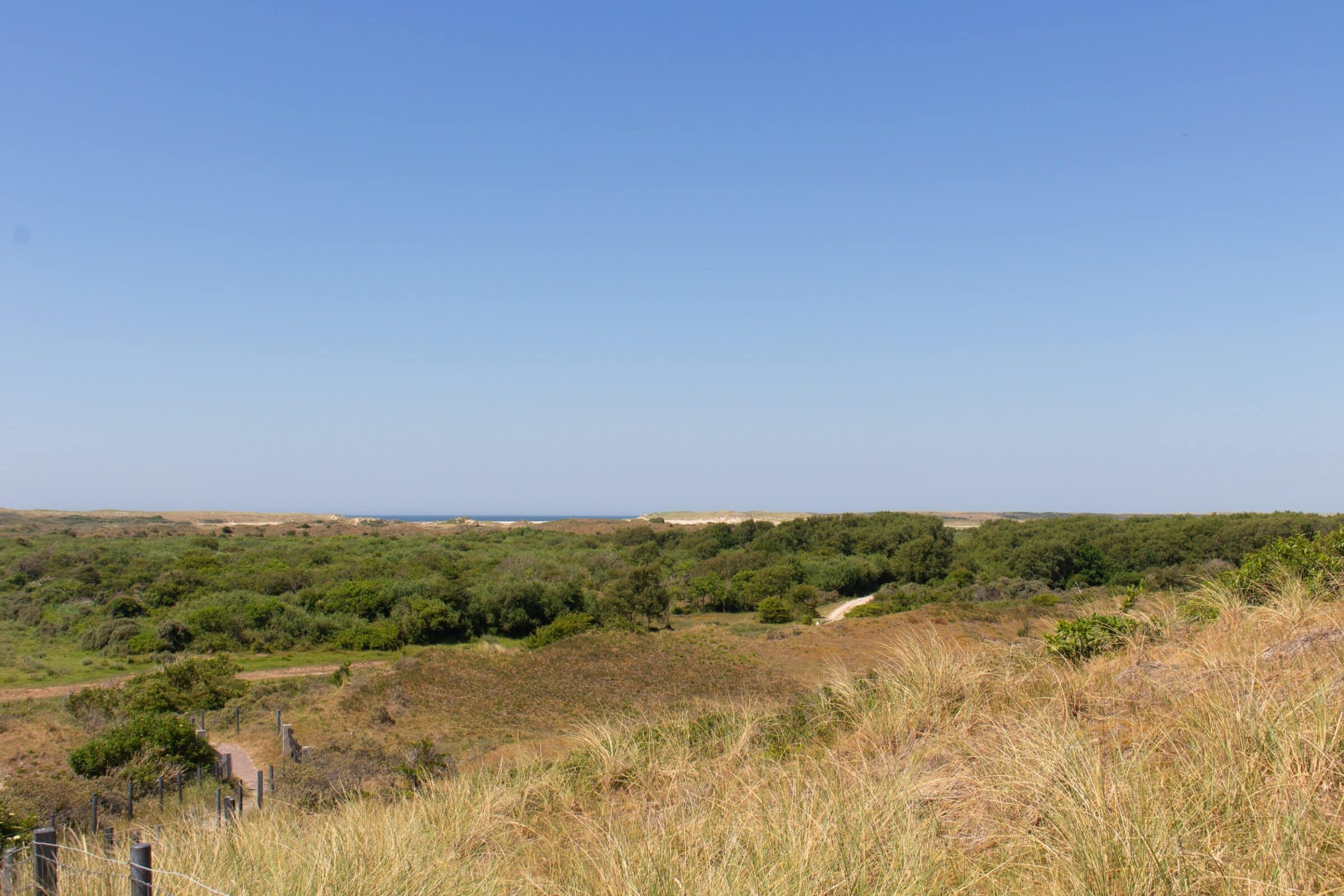
The Moai of Texel
In 1721, three ships set out from the Texel roadstead to find the unknown Zuidland. They don't think so, but it is an unknown inhabited island. And because it's Easter, Jacob Roggeveen calls it 'Easter Scheyland† We know it from the huge stone heads that seem to belong to huge buried bodies. They become Moai .
In 1972 the inhabitants of Easter Island already made contact with Texel. It is then a bit sensitive because Easter Island is still with us Chile belongs. In the 6000s, this contact was renewed by the Texel artist Niek Welboren. As a result, one of Easter Island's best sculptors, Bene Aukara Tuki Pate, comes to Texel. There is a piece of tuff of XNUMX kilos ready. When the artist is ready, there will also be a Moai on Texel. He is called the dreamer of Rapa Nui. His direction of view is where his brothers are standing. A beautiful image.
The gallery does not have to be open to visit the statue. It's just outside the door. But if the gallery is open, then you have a bonus. Inside are many drawings and paintings and there are statues. It is an old school and a classroom is still authentically furnished. It's nice to go back to your childhood. But the most beautiful thing is the serene garden with beautiful statues. An oasis of peace. There have to be ley lines here, it is that inspiring. More information about the gallery here..
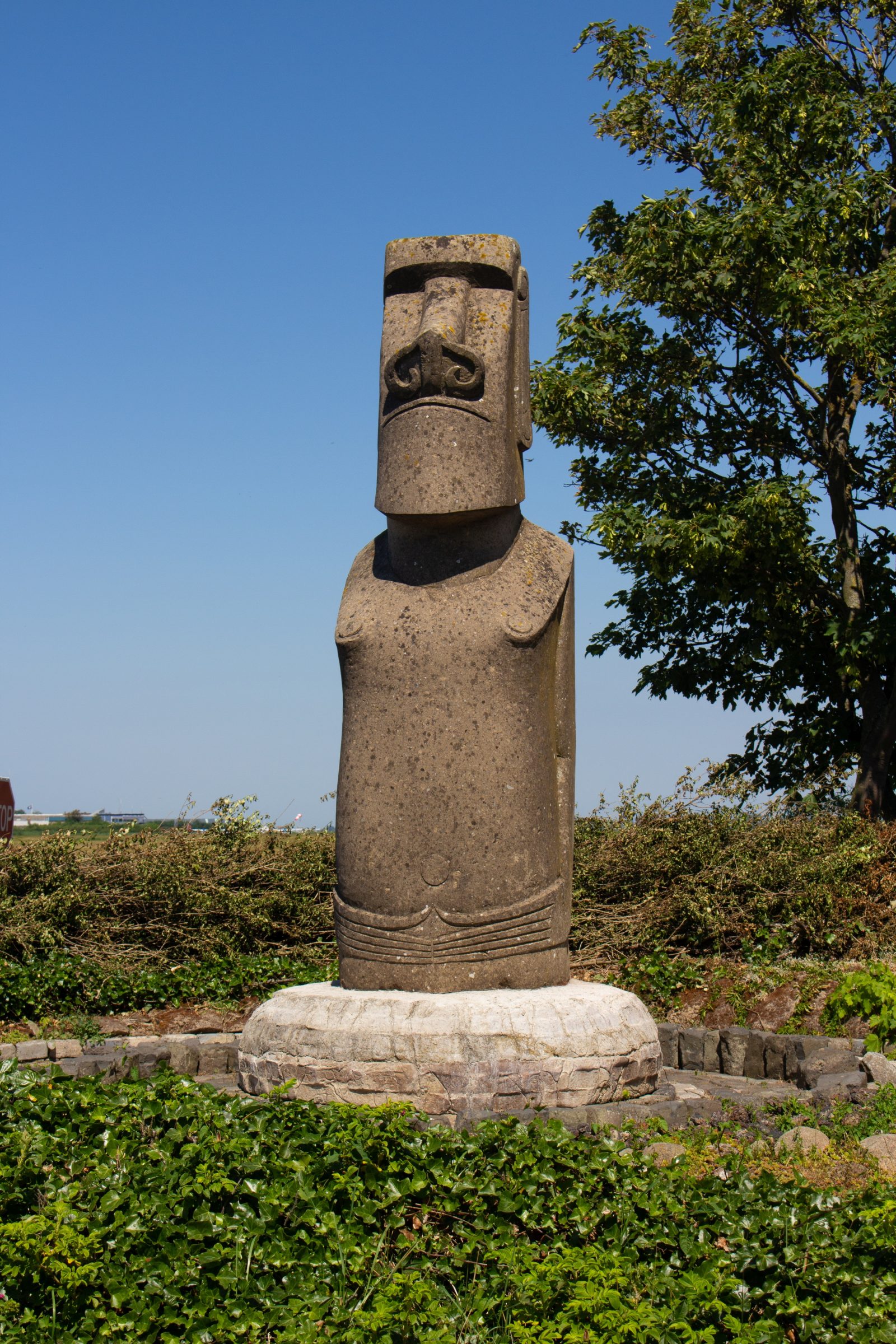
Finally beach
The weather is beautiful and when we are on Texel for a while, we are already cycling to one of the beautiful sandy beaches. There are plenty of these. It is wonderful to stroll through the sand, relax and have a cold drink on a terrace. Texel surprised us. It is an island where you can be fine. Relatively quiet and cheap to come. We'll be back for sure.
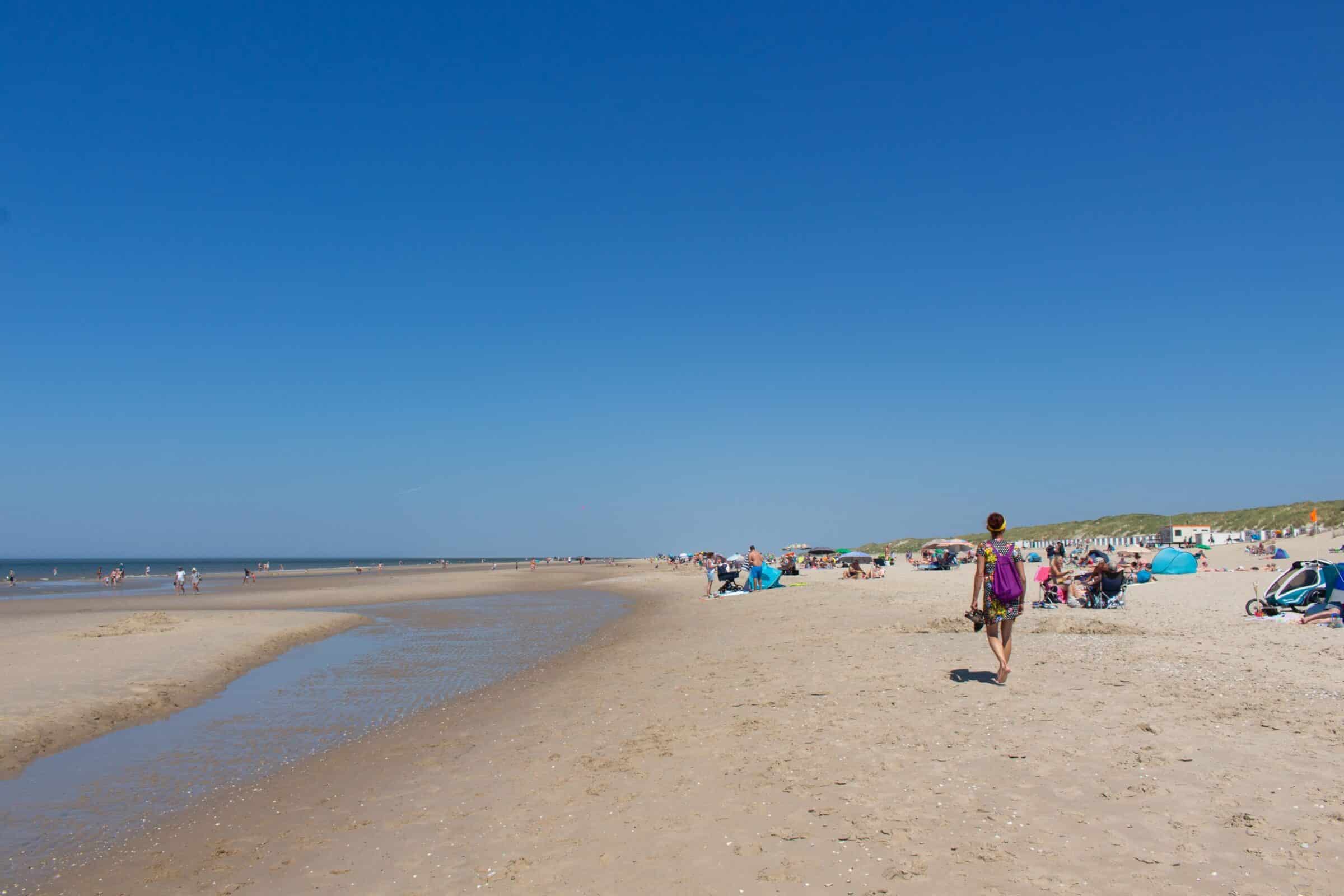
Colophon
This bicycle tour through the Netherlands is part of a whole series of bicycle tours to special places in the Netherlands to visit.
Hans van der Veeke is an avid cyclist. With his wife he already has large parts of Europe cycled off. But they also enjoy walking and traveling with their camper van. you can find him Internet and on Instagram.












